I want to fit my data to a specific function that has already been optimized using Matlab.
I get the following error:
'Warning message:
Computation failed in stat_smooth():
singular gradient '
Please help! Here is my R code:
tibble
x y SEM
1 1 0.0342 0.00532
2 3 0.0502 0.00639
3 5 0.0700 0.0118
4 10 0.123 0.0269
5 20 0.154 0.0125
6 30 0.203 0.0190
7 40 0.257 0.0255
8 50 0.287 0.0266
9 60 0.345 0.0347
10 90 0.442 0.0398
11 120 0.569 0.0570
12 180 0.726 0.0406
13 240 0.824 0.0150
14 360 0.868 0.00821
15 1440 0.890 0.0246
tibble %>%
ggplot(aes(x, y)) +
geom_point()+
geom_errorbar(aes(ymin=y-SEM, ymax=y+SEM), width=25)+
geom_ribbon(aes(ymin = y-2.575*SEM, ymax = y+2.575*SEM), alpha = 0.1)+
geom_smooth(method="nls",
formula= y ~ (1-((k2/(k2-k1))*exp(-k1*x))+((k1/(k2-k1))*exp(-k2*x))),
se=F,
method.args = list(start=list(k1=0.006999, k2=849.6)))

